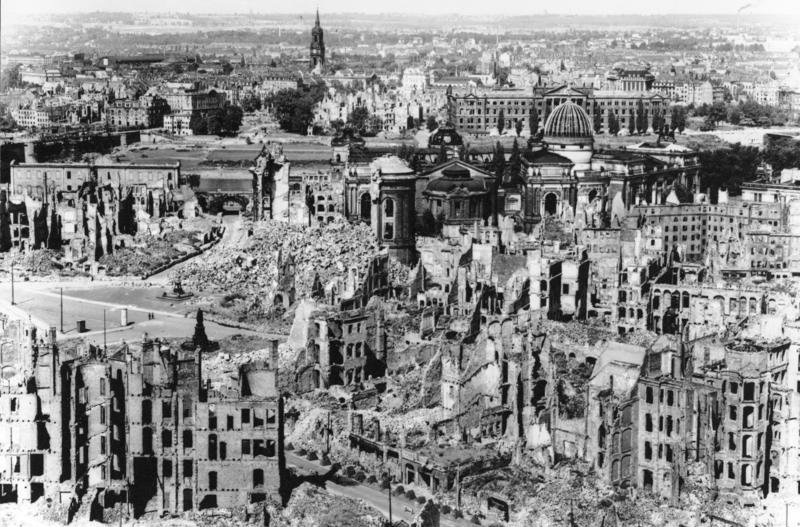The bombing of Dresden on February 13, 1945, remains one of the most controversial events of World War II. This devastating raid involved hundreds of British and American aircraft carrying out a massive bombing campaign that resulted in the destruction of much of Dresden’s historic center and the loss of tens of thousands of civilian lives.
The decision to bomb Dresden was not taken lightly. At the time, Germany was on the brink of defeat, and the Allied forces were determined to bring an end to the war as quickly as possible. Dresden, known as the “Florence on the Elbe” due to its architectural beauty, was chosen as a target because it was a major industrial and transportation hub for the Nazis.
The bombing campaign began on the night of February 13, with waves of bombers dropping thousands of tons of bombs on the city. The initial attack was followed by a second wave the next day, intensifying the destruction. The aim was to cripple German infrastructure and disrupt the Nazi war machine.
However, what happened next was beyond anyone’s expectations. The bombing created a firestorm, a phenomenon where the heat generated by the fires creates its own wind system, sucking in more oxygen and fueling the flames. The firestorm engulfed the city, leading to widespread devastation and loss of life.
The exact number of casualties is still a subject of debate. Estimates range from 25,000 to over 100,000, with the majority of victims being civilians. The destruction of Dresden’s historic center, including its iconic Frauenkirche and Semperoper, was a devastating blow to the city’s cultural heritage.
The bombing of Dresden has sparked intense controversy and debate over the years. Critics argue that the raid was unnecessary and disproportionate, as Germany was already on the verge of surrender. They question the morality of targeting a city with such historical and cultural significance, arguing that it was a war crime.
Proponents of the bombing defend the action as a necessary military operation. They argue that Dresden was a legitimate target because of its industrial and transportation importance to the Nazi war effort. They also point out that the raid helped to demoralize the German population and hasten the end of the war.
One of the key pieces of evidence used by those critical of the bombing is the lack of strategic military targets in Dresden. While the city did have some industrial facilities, they were not significant enough to justify the scale of the attack. Critics argue that the bombing was more about revenge and the desire to break the spirit of the German people.
Another point of contention is the timing of the raid. Some argue that the bombing was carried out at a time when the war was effectively won, and Germany was already on the verge of collapse. They question the necessity of such a destructive operation when victory was already assured.
Despite the controversy, the bombing of Dresden remains a significant event in World War II history. It serves as a reminder of the devastating impact of war on civilian populations and the difficult moral choices faced by military leaders.
References:
- BBC – Dresden: The World War Two bombing 70 years on
- History.com – Bombing of Dresden
- The Guardian – Dresden bombing still provokes controversy as 70th anniversary nears
SEO Excerpt:
The bombing of Dresden on February 13, 1945, remains one of the most controversial events of World War II. This article explores the reasons behind the raid, the devastating consequences, and the ongoing debate surrounding its necessity and proportionality.

